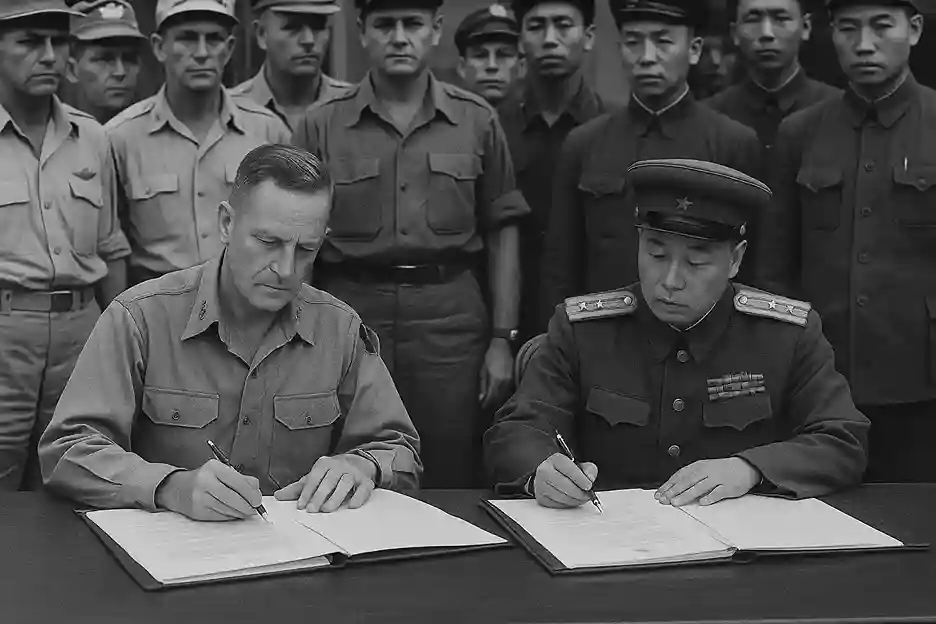On This Day, 1953: The Armistice That Froze the Korean War in Time

On This Day, 1953: The Armistice That Froze the Korean War in Time
PANMUNJOM, Korean Peninsula – On this day, July 27, 1953, the deafening roar of artillery and the crackle of gunfire finally fell silent across the Korean Peninsula. After three years of brutal and devastating conflict, the Korean War Armistice Agreement was signed, marking a crucial moment in Cold War history.
The war, which began in 1950, had pitted North Korea (supported by China and the Soviet Union) against South Korea (supported by a United States-led United Nations coalition). The conflict resulted in millions of military and civilian deaths, leaving the peninsula scarred and devastated.
The armistice, signed at the village of Panmunjom, was not a peace treaty but a ceasefire. The signatories were the United States (representing the UN Command), the North Korean People's Army, and the Chinese People's Volunteer Army. Crucially, South Korea's then-President, Syngman Rhee, refused to sign, as he sought to continue the war to reunify the country by force.
This refusal is a key reason why the agreement's legacy is so complex. While it successfully ceased hostilities, it did not officially end the war.
The armistice's most tangible outcome was the creation of the Demilitarized Zone (DMZ), a 250-kilometer-long, 4-kilometer-wide buffer that slices across the peninsula along the 38th parallel. Intended as a temporary measure, it has since become the most heavily fortified and tense border in the world.
Because no comprehensive peace treaty was ever signed, the two Koreas are, technically, still at war more than 70 years later. The armistice created a frozen conflict, a permanent state of suspended animation that has defined inter-Korean relations and the geopolitics of East Asia ever since.
The signing on this day was a monumental achievement that stopped the bloodshed. Yet, it also cemented a painful division, leaving a legacy of tension and separation that continues to shape the lives of millions on the Korean Peninsula today.


